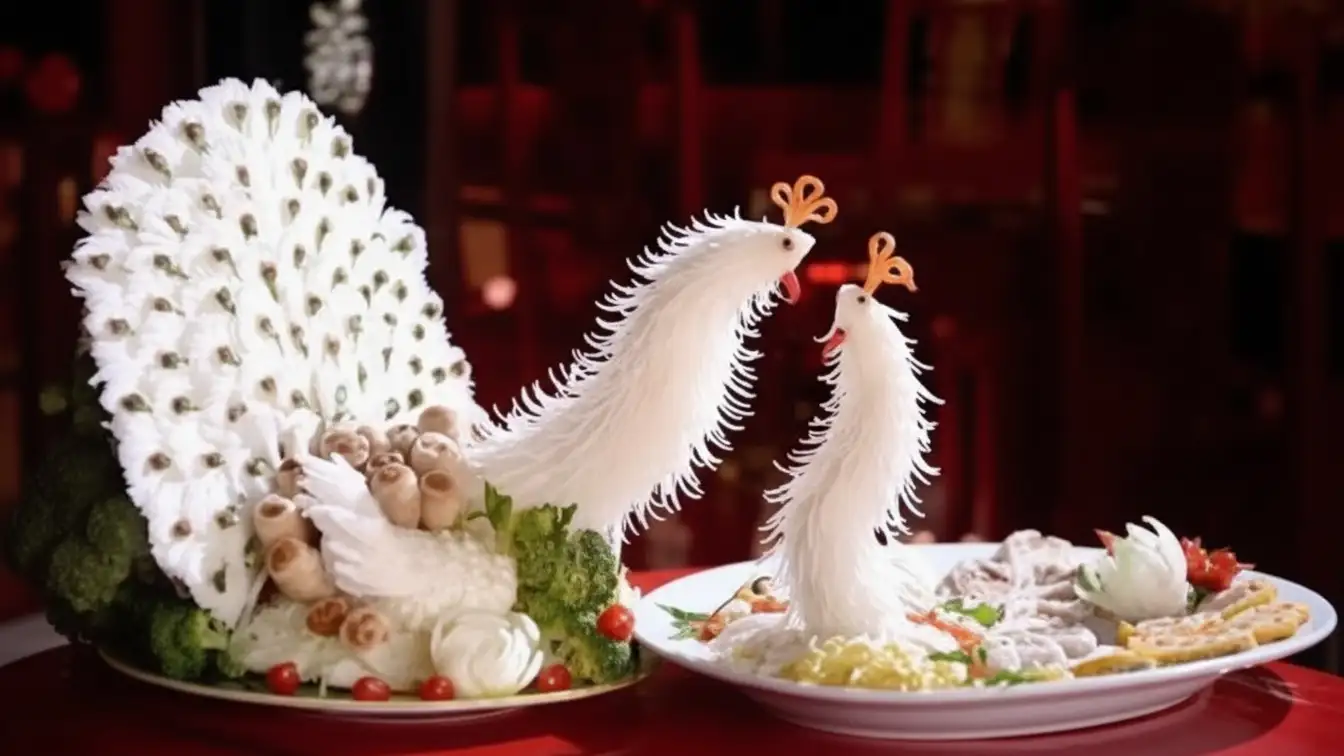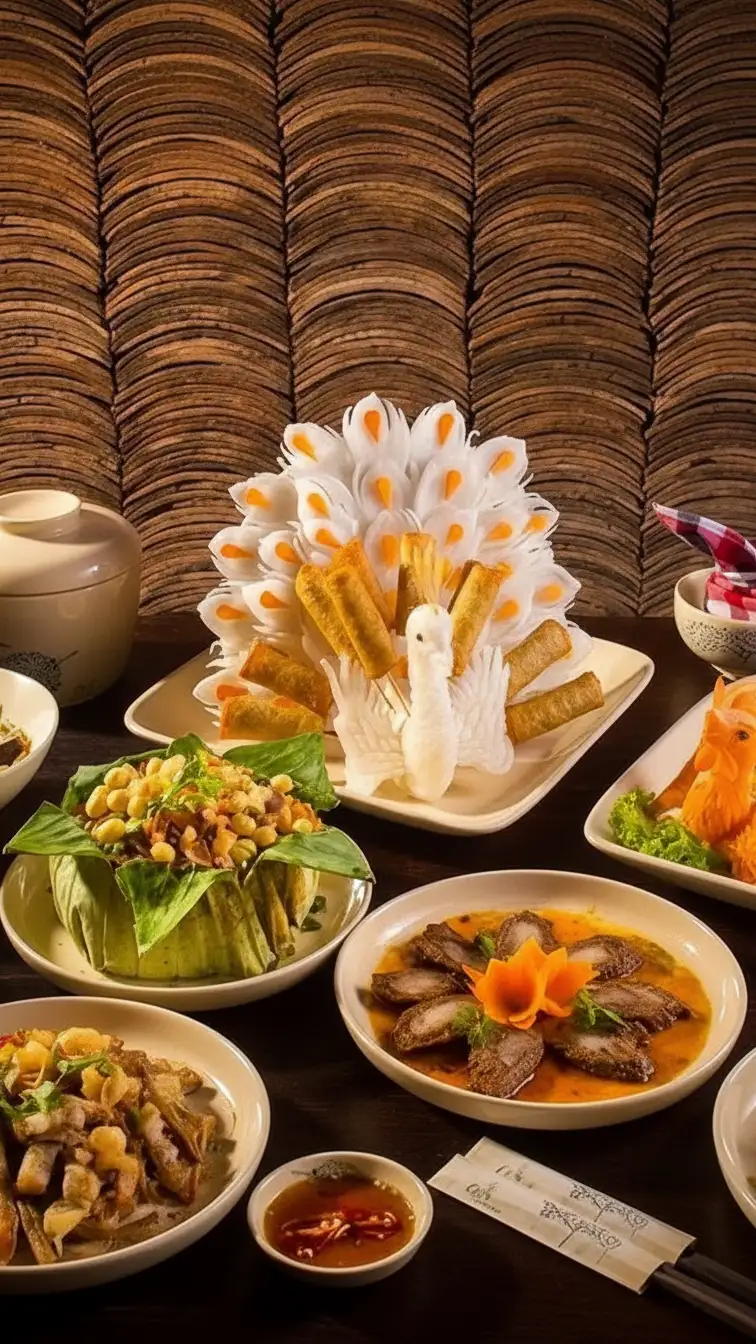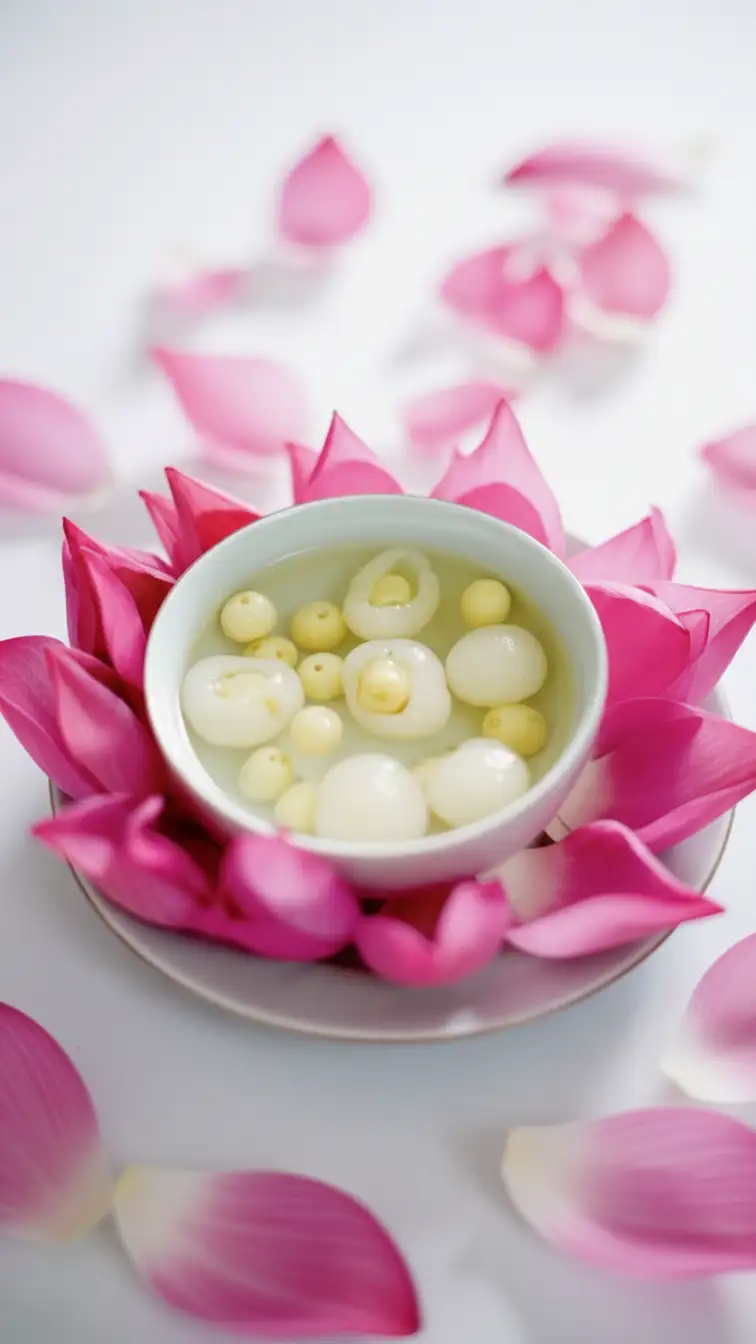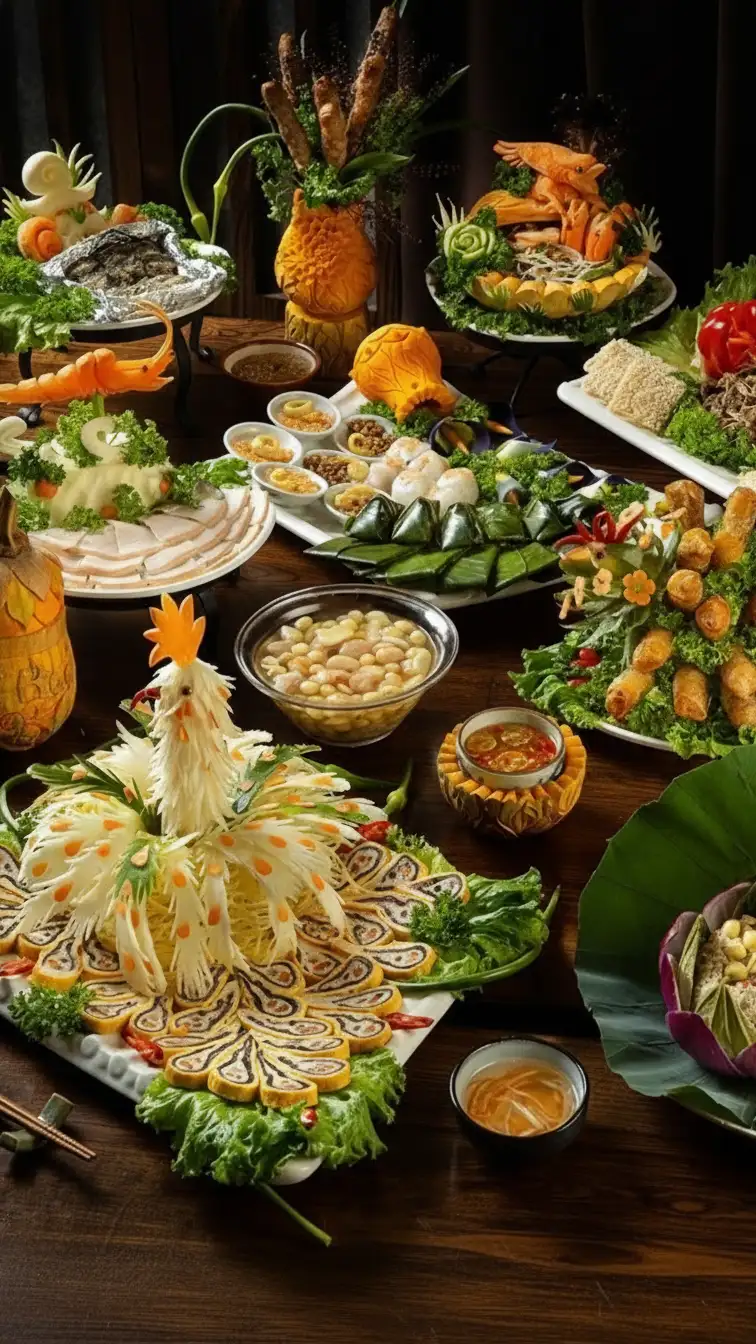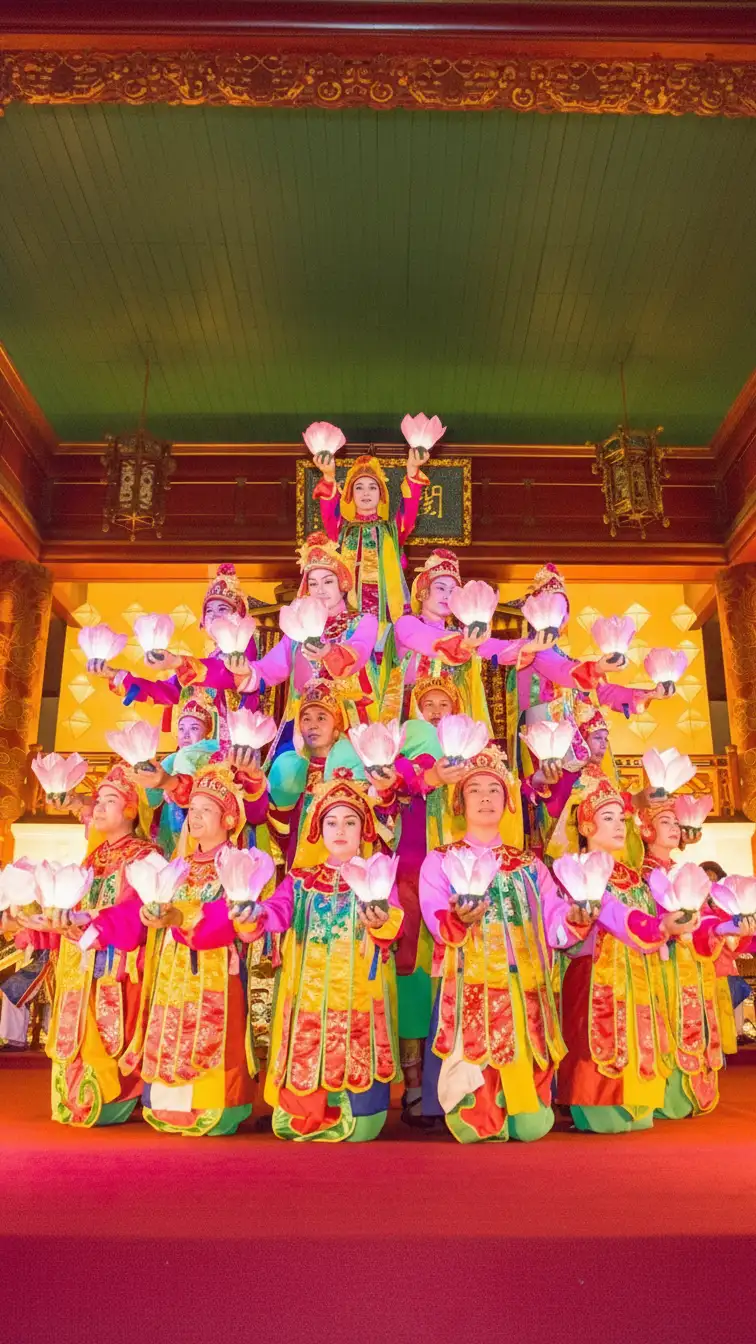Quick Facts
| Data Field (Title) | Content | Icon/Note |
|---|---|---|
| Official Vietnamese Name | Festival Ẩm thực Cung đình Huế (or part of the wider Hue Festival) | Literally: 'Hue Imperial Cuisine Festival'. |
| Location | The Imperial Citadel (Đại Nội) and other venues in Hue City, Thừa Thiên Huế Province. | The former capital of the Nguyễn Dynasty. |
| Date | Usually takes place during the biennial Hue Festival (often April to June). | Occurs every two years, with many related culinary events in between. |
| Significance | Recreates the sophisticated culinary culture of the Nguyễn Dynasty kings and court, emphasizing art, ritual, and health. | |
| Key Event Name | Royal Banquet Night (Đêm Hoàng Cung) or similar immersive dinner experiences. |
I. Overview: The Art of Imperial Dining
The Culinary Capital
Hue, the former imperial capital of Vietnam, is renowned as the nation’s culinary center. The Hue Royal Cuisine Festival—often manifested as the spectacular Royal Banquet Night—is a celebration of the city’s highest gastronomic achievement: the intricate, meticulously prepared cuisine once served to the Nguyễn Dynasty emperors.
This cuisine transcends simple nourishment; it is an art form that integrates the principles of Yin-Yang and the Five Elements, focusing on presentation, ritualistic significance, and health benefits. The festival serves as a cultural window, allowing modern visitors to step back in time and experience the opulence and refinement of court life.
Preservation of Heritage
The event not only provides an exceptional dining experience but also plays a vital role in preserving Hue’s intangible cultural heritage. The elaborate preparation and presentation techniques, passed down through generations, are showcased by master chefs, honoring a legacy where every dish was a work of art.
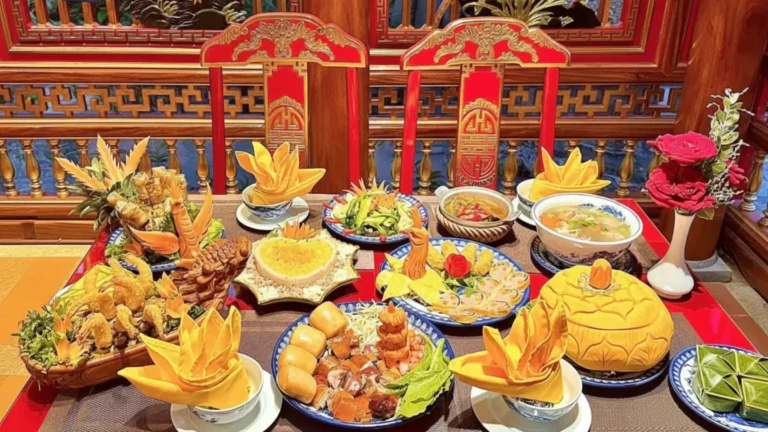
II. The Royal Banquet Experience (Đêm Hoàng Cung)
The main feature of the festival is the recreated Royal Banquet, a highly immersive and theatrical event.
1. The Setting and Ambiance
Venue: The event is typically held within the grand architecture of the Imperial Citadel, such as the former palace grounds or the Royal Theatre.
Costumes: Guests and performers are often dressed in traditional royal attire (Emperors, Empresses, Mandarins, and palace maids), dramatically enhancing the historical atmosphere.
Procession: The evening often begins with a solemn reenactment of a royal procession—a colorful parade moving through the Citadel gates with music and lanterns.
2. The Cuisine and Service
Menu Sophistication: A typical royal banquet features an array of exquisite dishes (historically, a King’s meal could include 35 to 50 dishes). Dishes are prepared with carefully selected ingredients to ensure harmony in five colors, five flavors, and five elements.
Artistic Presentation: The presentation is as important as the taste. Dishes are delicately arranged to resemble natural objects, animals (like the famous Peacock and Phoenix Spring Rolls), or flowers, often served in elaborately carved wooden boxes.
Signature Dishes: The menu features iconic royal delicacies and sophisticated street food favorites, elevated to imperial standards, such as:
Nem Công Chả Phượng (Peacock and Phoenix Spring Rolls)
Coconut Rice (Cơm Dừa)
Exquisite Royal Desserts (Chè), including Lotus Seed and Longan Sweet Soup.
3. Cultural Performances
The dining experience is complemented by authentic court arts, transporting guests to the era of the Nguyễn Dynasty.
Nha Nhạc (Royal Court Music): Live performances of UNESCO-recognized Nha Nhạc, or ‘elegant music,’ along with traditional court dances (like the Fan Dance), accompany the meal.
Reenactments: The program may include choreographed scenes depicting historical events, royal wedding ceremonies, or the daily life of the aristocracy.
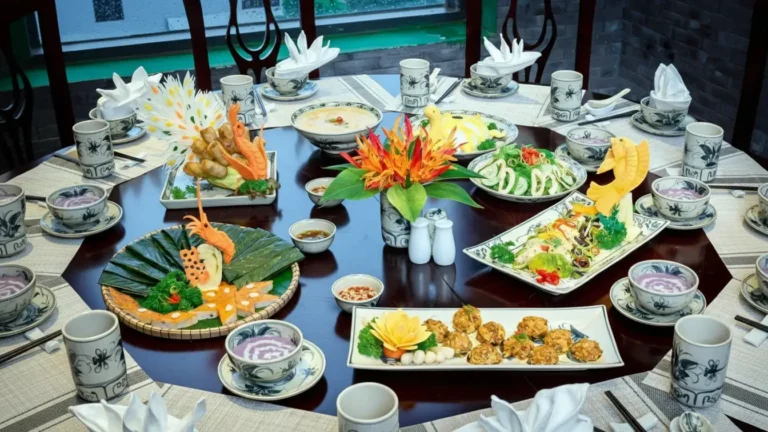
III. Visitor Information
| Guide Field | Details |
|---|---|
| When to Book | Tickets for the Royal Banquet Night (if held as a standalone event) are highly sought after and must be booked well in advance, often through local tour operators. |
| Pricing | Due to the elaborate nature of the setting, food, and performance, this is considered a premium cultural experience and is priced higher than standard dining. |
| Attire | While not mandatory, dressing in traditional Vietnamese Ao Dai or formal wear is encouraged for the Royal Banquet to enhance the immersive atmosphere. |
| Other Culinary Events | During the broader Hue Festival, a separate International Cuisine Festival is often held, featuring a large number of local and international food stalls and contemporary cooking demonstrations. |
| Local Tip | Even outside of the main festival, many quality restaurants in Hue offer Royal Set Menus, allowing visitors to sample the elegance of imperial cuisine year-round. |
